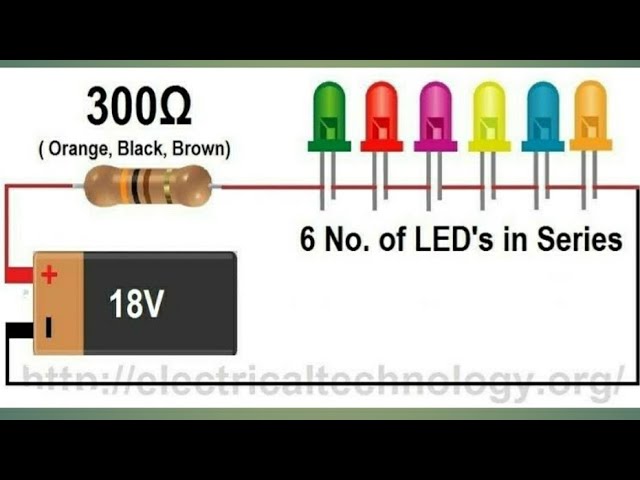
Best Way to Connect Multiple LEDs in Series
LEDs, or light emitting diodes, are a popular choice for lighting due to their energy efficiency and long lifespan. When connecting multiple LEDs in a series, it’s important to do so in the most efficient and effective way. In this article, we will discuss the best practices for connecting multiple LEDs in series to ensure optimal performance and longevity.
One of the main benefits of connecting LEDs in a series is that they can be powered using a single power source. This simplifies the wiring process and allows for easier control of the LEDs. However, connecting LEDs in series requires careful planning to ensure that each LED receives the correct amount of voltage and current.
Calculating the Total Forward Voltage
When connecting LEDs in series, it’s important to calculate the total forward voltage of the circuit. The forward voltage is the voltage required to turn on an LED and is typically around 2-3 volts for most LEDs. To calculate the total forward voltage, simply add the forward voltage of each LED in the series.
For example, if you are connecting three LEDs in series, each with a forward voltage of 3 volts, the total forward voltage would be 9 volts (3 + 3 + 3 = 9). Make sure to use this total forward voltage when choosing a power source for your LED circuit.
Calculating the Total Forward Current
In addition to calculating the total forward voltage, it’s also important to calculate the total forward current of the circuit. The forward current is the current required to illuminate an LED and is typically measured in milliamps (mA). To calculate the total forward current, simply add the forward current of each LED in the series.
For example, if you are connecting three LEDs in series, each with a forward current of 20 mA, the total forward current would be 60 mA (20 + 20 + 20 = 60). Make sure to use this total forward current when choosing a resistor for your LED circuit to limit the current flowing through the LEDs.
Using Resistors in a LED Series Circuit
When connecting multiple LEDs in series, it’s important to use resistors to limit the current flowing through the circuit and prevent the LEDs from burning out. The value of the resistor can be calculated using Ohm’s Law, where resistance (R) is equal to the voltage across the resistor (V) divided by the current flowing through the resistor (I).
For example, if you have a total forward voltage of 9 volts and a total forward current of 60 mA, and you are using a 9V power source, you can calculate the value of the resistor using the formula R = (V_source – V_LED) / i_LED. In this case, the value of the resistor would be (9 – 9) / 0.06 = 0 ohms.
Benefits of Connecting LEDs in Series
There are several benefits to connecting LEDs in series. One of the main benefits is that LEDs in a series circuit share the same current, which simplifies the wiring and allows for easier control of the LEDs. Additionally, connecting LEDs in series can help balance the brightness of the LEDs and ensure that they all illuminate evenly.
Furthermore, connecting LEDs in series can help improve the efficiency of the circuit and reduce the overall power consumption. By using a single power source to power multiple LEDs, you can save energy and reduce the cost of running your lighting setup.
Conclusion
Connecting multiple LEDs in a series can be a great way to simplify wiring, improve efficiency, and ensure optimal performance. By calculating the total forward voltage and current, using resistors to limit the current, and reaping the benefits of a series circuit, you can create a reliable and energy-efficient lighting setup.
Was this helpful?
0 / 0